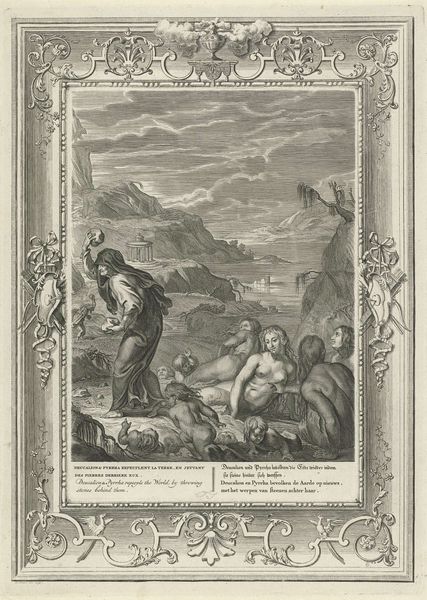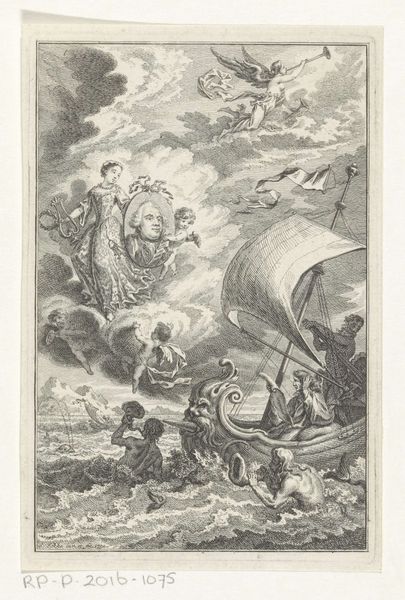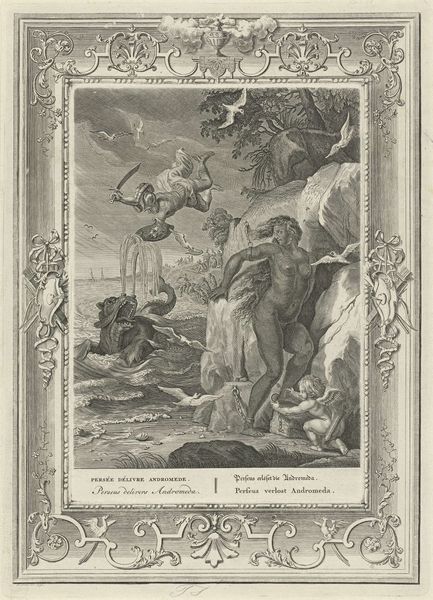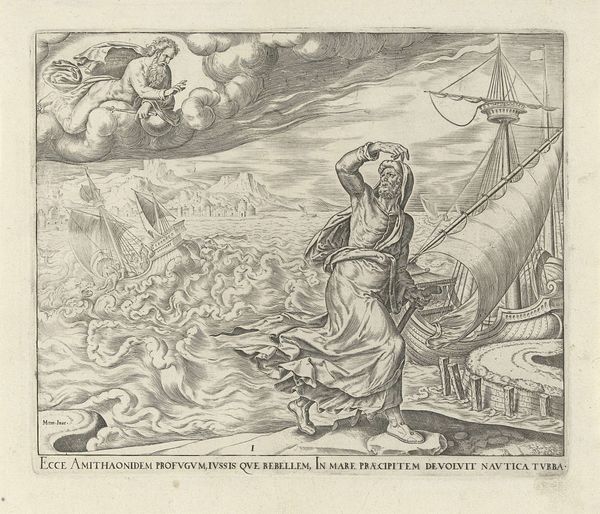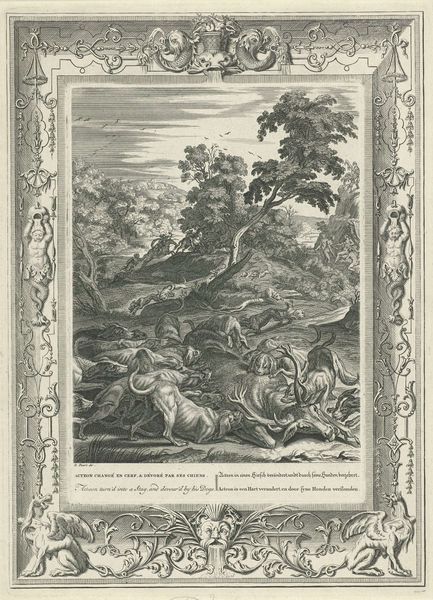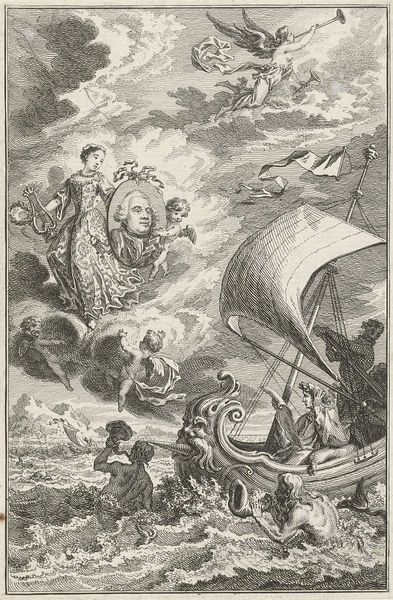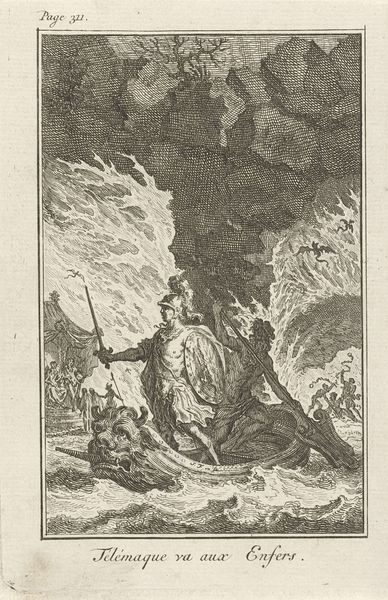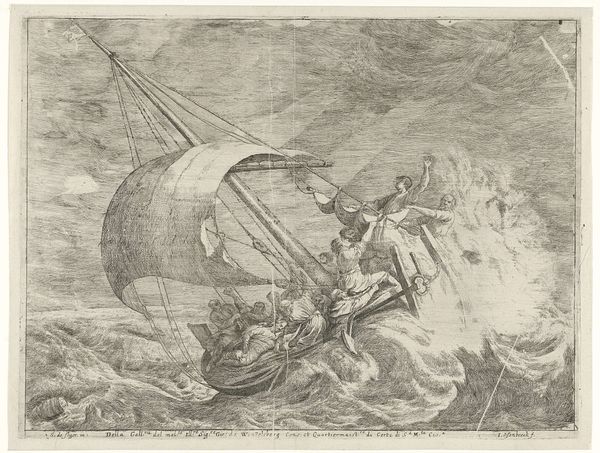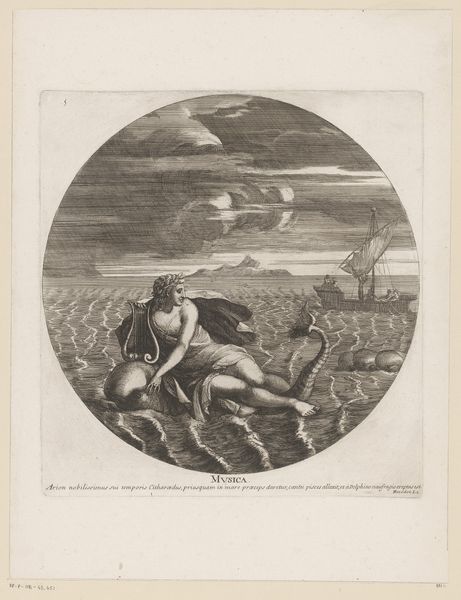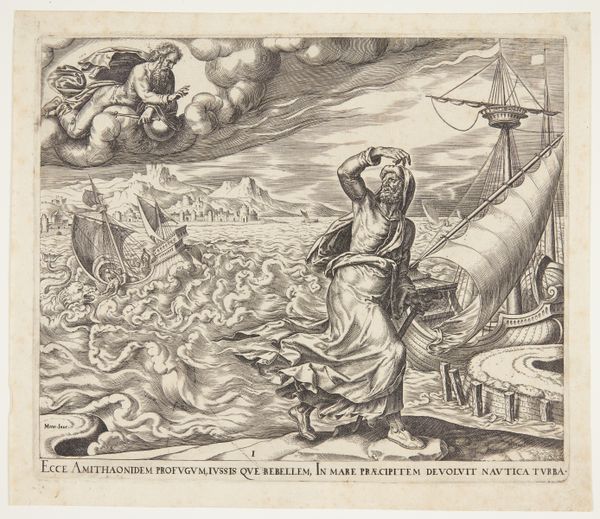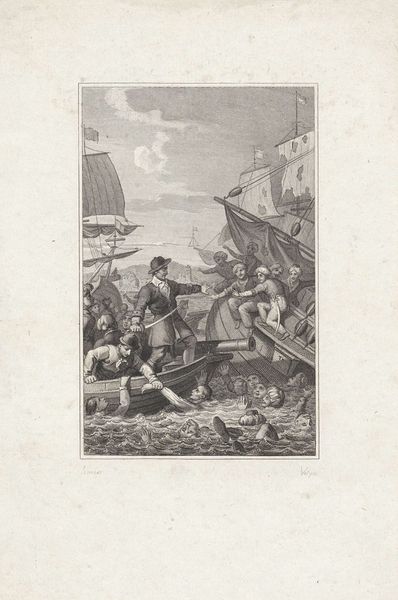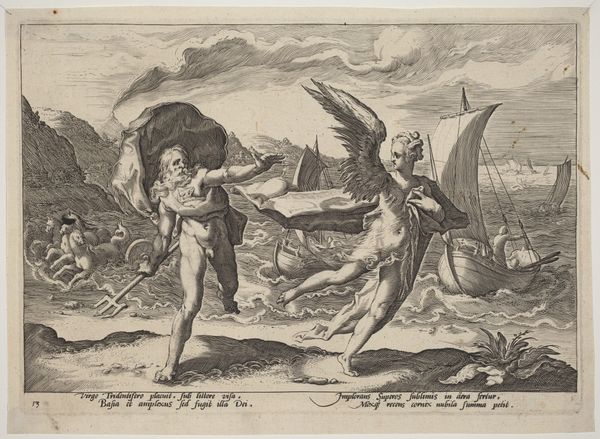
drawing, print, ink, engraving
#
drawing
#
baroque
#
pen drawing
# print
#
figuration
#
ink
#
mythology
#
history-painting
#
engraving
Dimensions: height 250 mm, width 176 mm, height 356 mm, width 256 mm
Copyright: Rijks Museum: Open Domain
Curator: This drawing by Bernard Picart, dating from 1731, depicts Glaucus’s transformation into a sea-centaur, and it resides here with us at the Rijksmuseum. Editor: My goodness, he does look a little queasy, doesn't he? Caught between the terrestrial and the marine, a rather soggy centaur-in-progress. The sea is fairly churning too – is that nausea, or a bracing splash of fate hitting him? Curator: Transformations, especially in Baroque art, are loaded with social commentary. Glaucus was a fisherman. This image underscores societal anxieties about social mobility – the disruptive potential of shifting identities and class boundaries, even in mythology. Editor: Right, so it’s less about the wonders of metamorphosis and more a cautionary tale. Still, I’m quite taken with the delicate line work and ornate frame—it creates such an elegant contrast with the somewhat gruesome transformation depicted. The poor chap looks quite put out, grasping those… weeds? Perhaps they represent a last clinging to his old life. Curator: Indeed. Consider the historical context: the print was intended for a wide audience. Picart worked within the established visual language of his time, making complex mythological narratives accessible while reinforcing prevailing social norms. The dramatic scene, framed and labelled with different languages, turns the viewer into a voyeur observing this transformation. Editor: A Baroque meme, almost! One to inspire—and perhaps mildly terrify—the 18th-century mind. I find the fishing nets oddly prominent; another melancholic nudge towards Glaucus' past. This isn't so much an elevation as a forced removal from what he once was. And judging by the face, he knew he should have asked for directions. Curator: It reminds us that art isn't just aesthetic. The engraver translates an Italian poem in several languages on the print margins, thereby establishing his international erudition, attracting a global market and confirming his cultural capital. Editor: So much more than meets the eye at first splash, then! A reminder that even the flashiest transformations can leave you feeling a bit seasick, metaphorically speaking. Curator: Absolutely. And Picart uses the myth of Glaucus as a platform for considering not just the individual, but the societal forces at play in defining who we are – and what we can become.
Comments
No comments
Be the first to comment and join the conversation on the ultimate creative platform.
